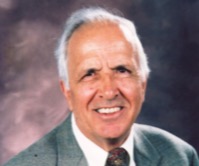Question:
Dr. Themelis, Thank you very much for passing this along. The thesis seems to be comparing the health and environmental effects of WTE as compared to landfilling, in which it is determined to be less harmful. However, most of the experts I talk to who are against WTE are in favor of a “zero waste” system that integrates reduction, reuse and recycling as well as composting and “upcycling” to create new cottage industries.
Response from Prof. Themelis:
What are the facts? Look up EPA Facts and Figures: Total US recycling plus composting, etc. of MSW in the last 20 years has remained about 30%. What happens to the remainder 70% of POST-RECYCLING waste, according to your “most experts”? 7% goes to WTE, 63% to landfillling. “Zero waste” is a pipedream. “Zero landfilling” has been achieved in several countries by a combination of WTE and recycling.
Question:
I’m trying to get a sense of what the science actually says about the impacts of two things: traditional WTE and gasification. I’m hoping you can help me answer or point me in the right direction to where I can answer the following questions:
What does the current science say about the environmental and health consequences of traditional WTE?
Response from Prof. Themelis:
WTE should be compared to landfilling, the only other alternative for POST-RECYCLING MSW. WTE is much superior, that is why advanced OECD countries have chosen to build WTEs even though the dispisal cost is about $40 dollars more that best-of-kind landfilling. In the US, GHG emissions of WTE about 1 ton CO2, eq per ton of MSW to WTE Dioxin and furans: US WTE total 3 grams/year, Landfill 1500 grams/year. (see Dwyer and Themelis in Google) etc,. etc.
Question:
One source explained to me that many WTE companies claim they do not produce emissions of any regulated pollutants, but that the emissions they do produce – like dioxins and furans – are not regulated, largely because of lobbying by the waste industry. Would you say this is true?
Response from Prof. Themelis:
Not at all. The most profitable business in the US, in overall, is landfilling: You buy a piece of rural land (Google:The United States pasture value averaged $1,400 per acre, up $30 (2.2 percent) from 2018) for $1,400/acre and fill it up with MSW (about 65,000 tons/acre, US average) for revenue of 65,000 x $40.ton= $2,600,000, over 40 years. There is a lot of money, and incentive, for lobbying to perpetuate landfilling.
Question:
While most environmentalists and recycling experts seem to be against WTE?
Response from Prof. Themelis:
I don’t know of any scientist who is for landfilling rather than WTE. Do you know? Recycling is preferable to WTE but, as stated above, the only alternative to WTE for POST-RECYCLING waste is landfilling.
Question:
I at least one source is less opposed to gasification, which he says avoids the emissions problems of traditional WTE. However, others say that these claims are false and that gasification is not meaningfully different from traditional WTE. They claim that gasification does produce ash that cannot be safely or easily disposed of as well as emissions of nanoparticles that are difficult to measure. Would you say this is true? Can you explain how exactly gasification works and why exactly there is so much dispute over whether it creates harmful emissions or byproducts?
Response from Prof. Themelis:
As explained in my earlier email, gasification and combustion are both thermal processes, have the same gaseous and solid products, and require same pollution control products. With regard to MSW, so far, combustion has proven to be more economic and is by far the dominant WTE technology.
Question:
Let me know if you can talk over the phone to discuss these questions.
Response from Prof. Themelis:
After your read and “digest” the above comments, we can attange for a Skype or WSU meeting.

